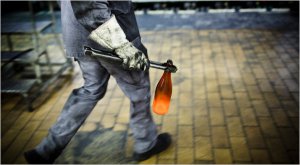Victory for the Comité Interprofession du Vin de Champagne (CIVC) last Friday in summary proceedings before the Presiding Judge of the District Court The Hague (P.H. Blok) against Unilever Nederland B.V., producer of Andrélon’s 70th anniversary ‘Champagne shampoo’. Some of the bottles were ‘dressed’ with a ‘collar’ bearing the signs ‘Champagne’, ‘70’ and the pay-off ‘Omdat we jarig zijn’(‘Because it’s our birthday’), depicted against a ‘sparkling’ background. Unilever accompanied the introduction of the shampoo with a commercial showing a garden party at which characters from previous Andrélon commercials are toasting to Andrélon with a glass of champagne. At the end of the commercial the shampoo bottle is shown with the text ‘Champagne Shampoo voor een feestelijke glans’ (champagne shampoo for a festive shine). Furthermore Unilever created an advertisement in which a bottle of shampoo is placed in a champagne cooler filled with ice with the accompanying text ‘Elke dag champagne’(each day champagne). After CIVC had summoned Unilever to cease and desist the use of Champagne, Unilever removed the wording ‘Champagne Shampoo’ from the text at the end of the commercial and rephrased the wording of the advertisement text ‘Elke dag champagne’ into ‘Elke dag feest’ (each day a party).
The Presiding Judge gives short shrift to the use of Champagne by Unilever (Unilever apparently did not resist the alleged infringement itself). Unilever is ordered to refrain immediately from the use of ( the protected geographical indication) Champagne and prohibited to market Andrélon Champagne shampoo. However the Presiding Judge also considers that not all use of Champagne is forbidden, but that consideration is not elaborated any further.
No mercy is either shown towards Unilever with regard to CICV’s claims for an injunction against the changed commercial and for a recall of all Champagne bottles located at retailers. The Presiding Judge holds that CICV has rightly argued that in certain circumstances a defendant who infringed a protected geographical indication is under an obligation to take appropriate measures to discontinue the wrongful situation created by himself. Accordingly the Presiding Judge rules that Unilever refrains from the promotion of the Champagne shampoo and to recall the remaining shampoo bottles available at retailers.
Parties to the proceedings discussed the issue of full procedural cost compensation. Unilever indicated that geographical indications might not qualify as intellectual property rights for which the full procedural cost compensation is applicable. According to Unilever geographical indications should be regarded as rights sui generis. The Presiding Judge disagreed and decided that according to article 2 par. 2 and article 22 et seq TRIPs agreement geographical indications are intellectual property rights. Article 2 par. 2 of the EU Enforcement Directive should be read accordingly, because the EU are bound by the Trips agreement. The Presiding Judge ordered Unilever to pay to CICV € 25.000 for procedural costs.


